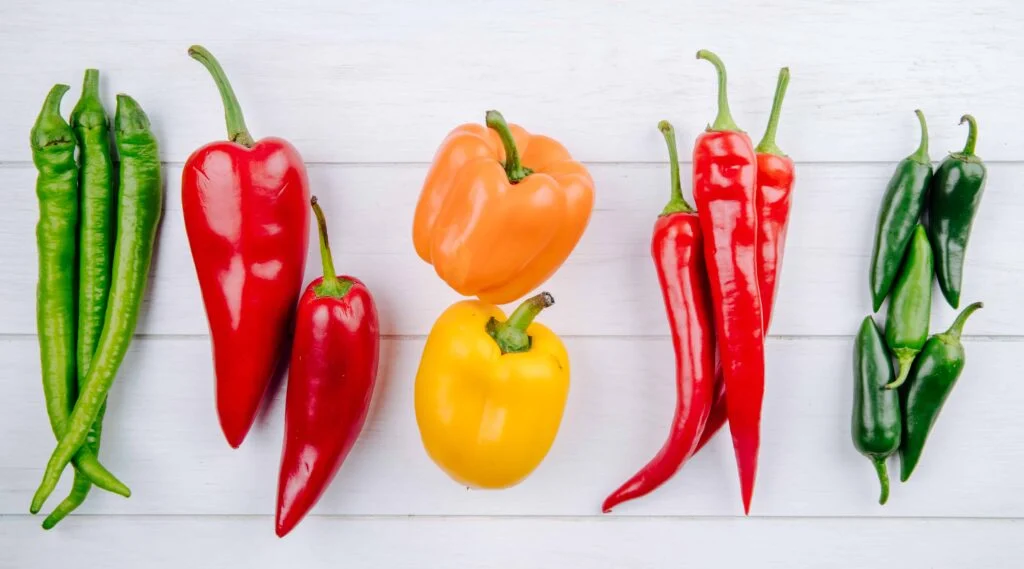If you love heat, these daredevil peppers might be for you. Ornamental in the edible landscape and on the plate, spicy peppers bring unmatched flavor and punch. While the profiles vary, there’s no missing the high Scoville units for the spiciest pepper varieties available. Gardening expert Katherine Rowe explores the hottest of the hot to add kick to the collection this summer.
Peppers are a rewarding summer crop, with each plant producing plenty of fruit as the weather warms up. Their flavors range from sweet and mild to bold and fiery, covering the full spectrum of taste and spice. The vibrant fruits look stunning on the plant and can be picked at any stage—even when green—to switch up their flavor.
The heat in peppers comes from capsaicin, a natural defense mechanism that deters pests and grazing animals. The Scoville Scale measures pepper heat, though factors like climate, temperature, soil, and growing conditions also play a role. Scoville Heat Units (SHU) quantify the capsaicin content, a system created by Wilbur Scoville back in 1912 to rank how fiery a pepper tastes.
Whether eaten fresh, roasted, stir-fried, dried, or turned into hot sauce, the spiciest pepper varieties pack the most punch on the Scoville chart. Their intense heat often comes with a warning, but their names usually give it away.
Growing Hot Peppers
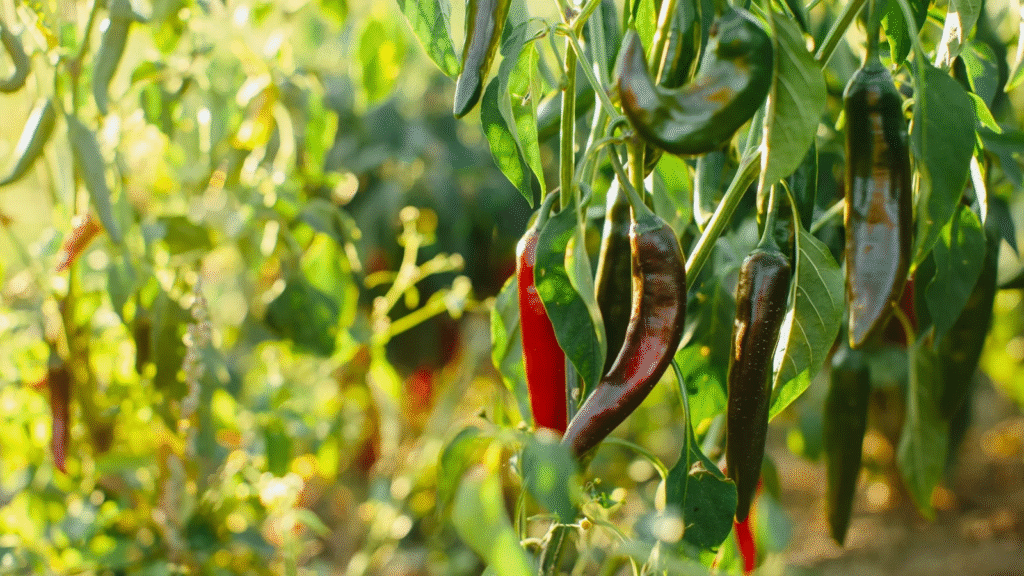
Peppers thrive in warmth and sunlight, so they do best in spots with full sun, regular moisture, and well-drained soil. These adaptable plants also grow well in containers and raised beds—great for areas with poor soil or drainage issues.
Ideally, peppers need six to eight hours of sunlight daily. However, in scorching climates, too much afternoon sun can cause sunscald, so a bit of shade during peak heat helps.
Watering about one to two inches per week keeps them happy, with extra hydration during heat waves. Consistent moisture is key—too dry or too soggy stresses the plants.
For the best flavor, harvest peppers at peak ripeness when they’re crisp and start to develop slight “stretch marks” (corking), signaling maximum flavor. Depending on the variety, they’ll turn green, red, yellow, orange, or purple when ready. Use shears or a knife to cut them off, leaving a short stem to avoid damaging the brittle branches.
Handle hot peppers carefully—they can irritate skin and eyes. Label plants to know what you’re dealing with, and keep them away from kids.
‘Carolina Reaper’
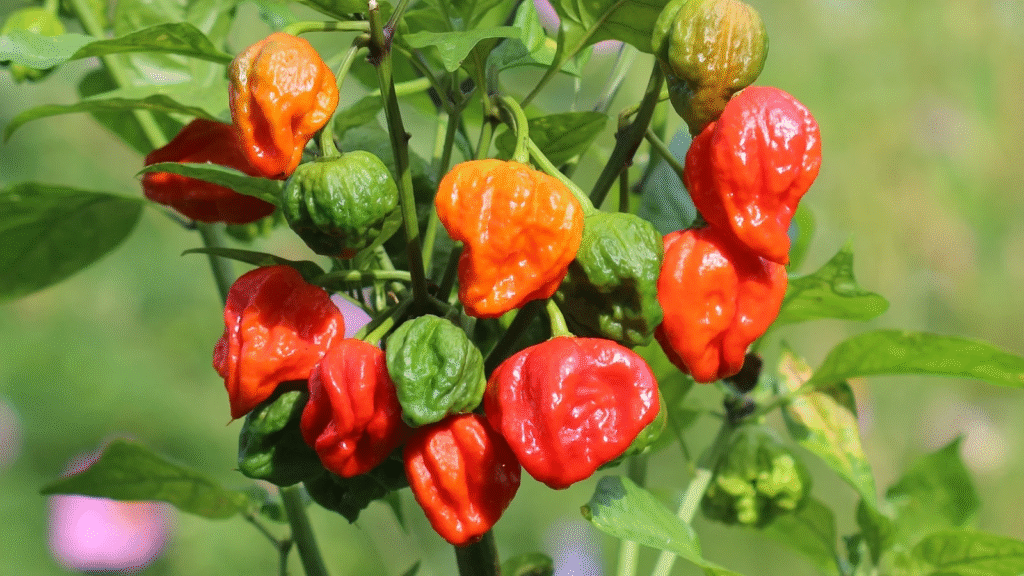
Botanical name: Capsicum chinense ‘Carolina Reaper’
Sun requirements: Full sun
Height: 4-5’
According to Guinness World Records, the ‘Carolina Reaper’ is the world’s second-hottest pepper, only beaten by ‘Pepper X’ (bred by the same farmer, Ed Currie). ‘Pepper X’ hits over 2.5 million SHU, while ‘Carolina Reaper’ averages around 1.6 million—still insanely hot. Since ‘Pepper X’ is patented and not sold as seeds, ‘Carolina Reaper’ is the hottest option for home growers.
For comparison, a jalapeño ranges from 2,000 to 10,000 SHU, making the ‘Carolina Reaper’ up to 800 times hotter at its peak.
Despite the heat, it has a sweet, fruity start before the burn kicks in. The twisted red peppers have a scythe-like shape (hence “Reaper”). A tiny piece spices up a dish, and they’re great dried and ground into powder for controlled heat.
‘Ghost’ (‘Bhut Jolokia’)
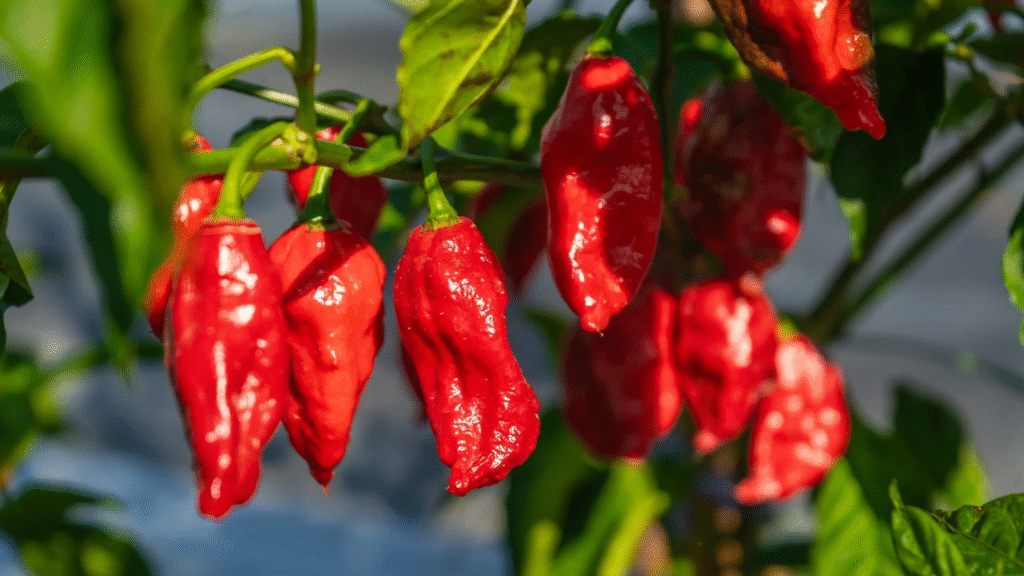
Botanical name: Capsicum chinense ‘Bhut Jolokia’
Sun requirements: Full sun
Height: 16-48″
At over 1,000,000 SHU, ‘Ghost’ was the first pepper to break the million-Scoville mark. Originally from India, it handles extreme heat—and delivers it too. The Indian military even used it in tear-gas-like grenades!
These striking peppers grow about three inches long, shifting from green to orange-red to dark red. They take roughly 100 days from transplanting to mature.
‘Moruga Trinidad Scorpion’
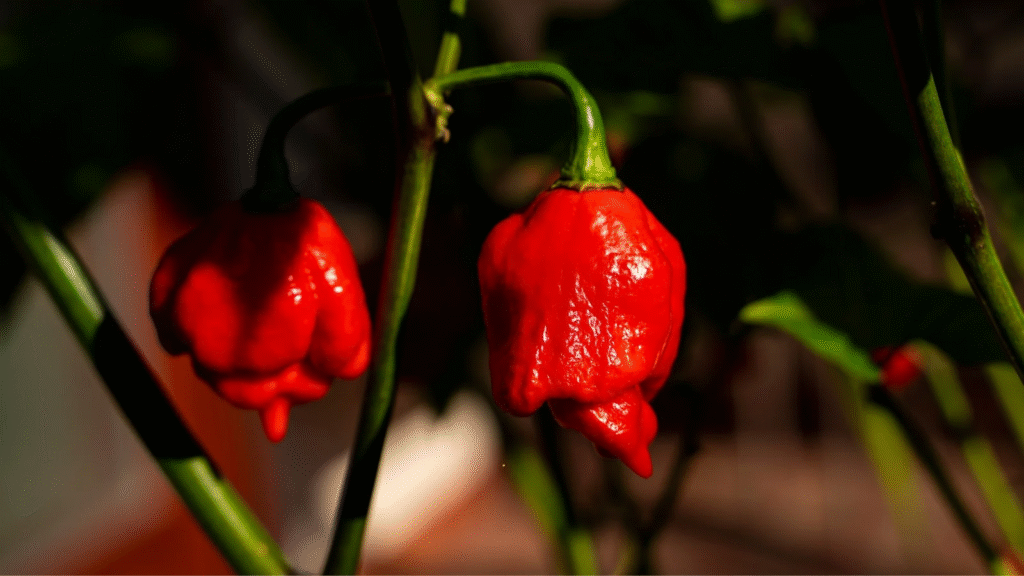
Botanical name: Capsicum chinense ‘Moruga Trinidad Scorpion’
Sun requirements: Full sun
Height: 3’
This pepper might be hotter than the ‘Carolina Reaper,’ with some tests recording over 2 million SHU. Researchers at New Mexico State University’s Chili Pepper Institute found its capsaicin so strong it seeped through latex gloves—multiple times.
Originally from Trinidad and Tobago, these glossy, golf ball-sized peppers pack a serious punch. They’re said to have a fruity, cinnamon-like sweetness before the heat takes over.
‘Dragon’s Breath’
Botanical name: Capsicum chinense ‘Dragon’s Breath’
Sun requirements: Full sun
Height: 2-3’
True to its name, this U.K.-bred pepper (named after Wales’ dragon symbol) hits up to 2.4 million SHU. The scarlet fruits have thick walls and a pointed tip, much like the ‘Carolina Reaper.’ Besides their heat, they were developed for ornamental use and even as a potential natural anesthetic.
‘Scotch Bonnet’
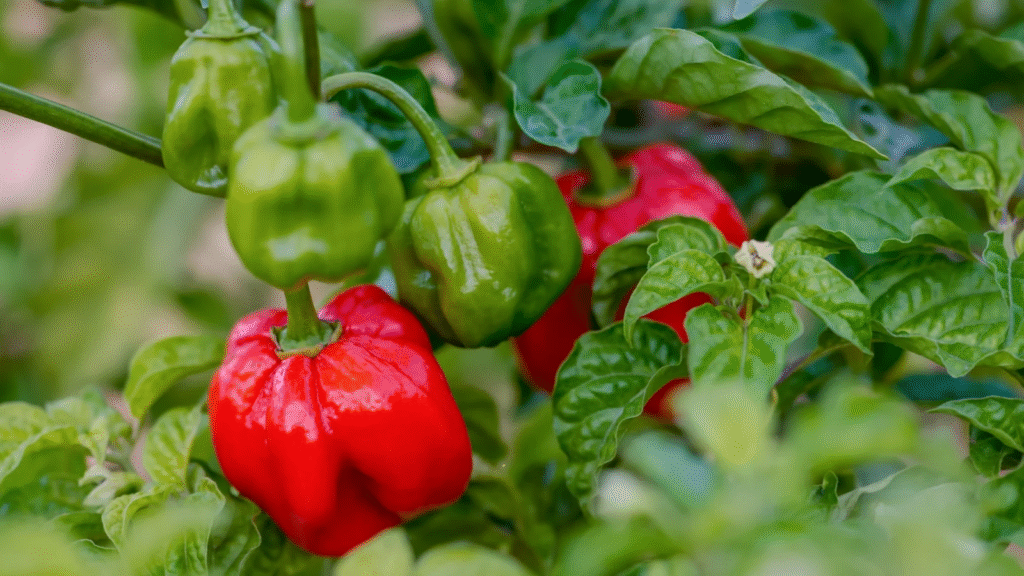
Botanical name: Capsicum chinense ‘Scotch Bonnet’
Sun requirements: Full sun
Height: 2-3’
A step down from the extreme heat but still scorching, these peppers (shaped like Scottish caps) range from 100,000 to 325,000 SHU. The puckered, 1.5-inch fruits have a smoky, fruity flavor with sweet citrus notes—best when fully red.
‘Habanero’
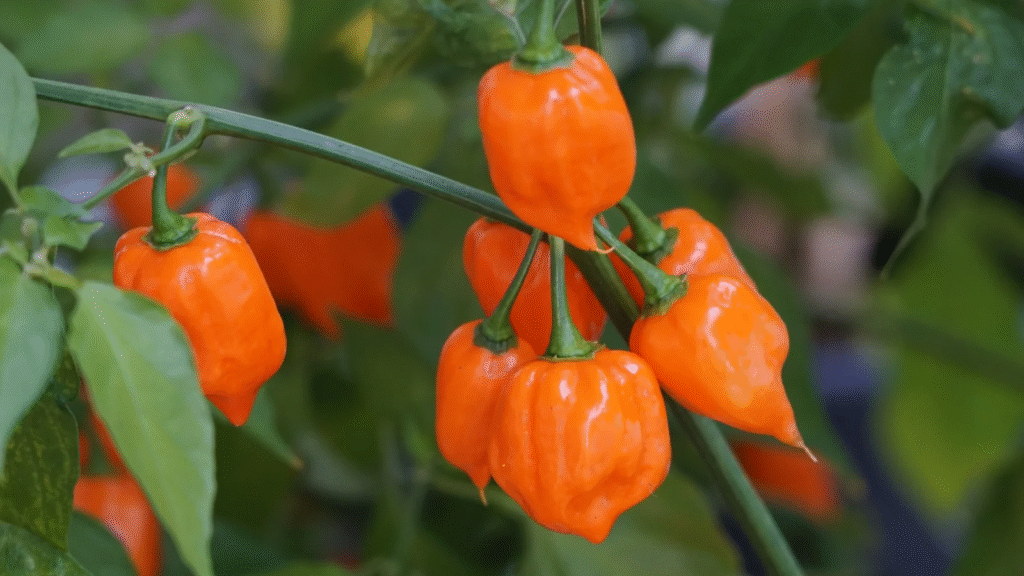
Botanical name: Capsicum chinense ‘Habanero’
Sun requirements: Full sun
Height: 2’
Habaneros rank among the world’s hottest peppers (100,000–350,000 SHU)—about 100 times hotter than jalapeños. Their fruity, citrusy flavor makes them great for salsas, cocktails, and grilled dishes. They ripen to bright green, yellow, or orange-red.
‘Fish’ Pepper
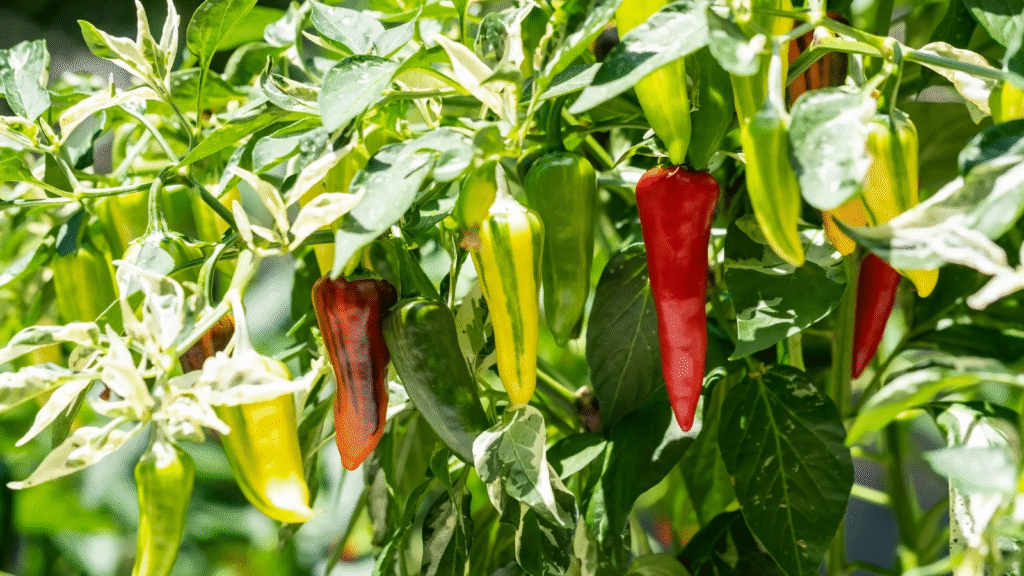
Botanical name: Capsicum annuum ‘Fish’
Sun requirements: Full sun
Height: 2’
Not in the million-SHU club, but still hot (similar to cayenne at 40,000–75,000 SHU). This African-American heirloom from the 1800s was used in Chesapeake Bay seafood dishes. Its striped peppers and variegated foliage make it a garden standout.
‘Thai Hot’
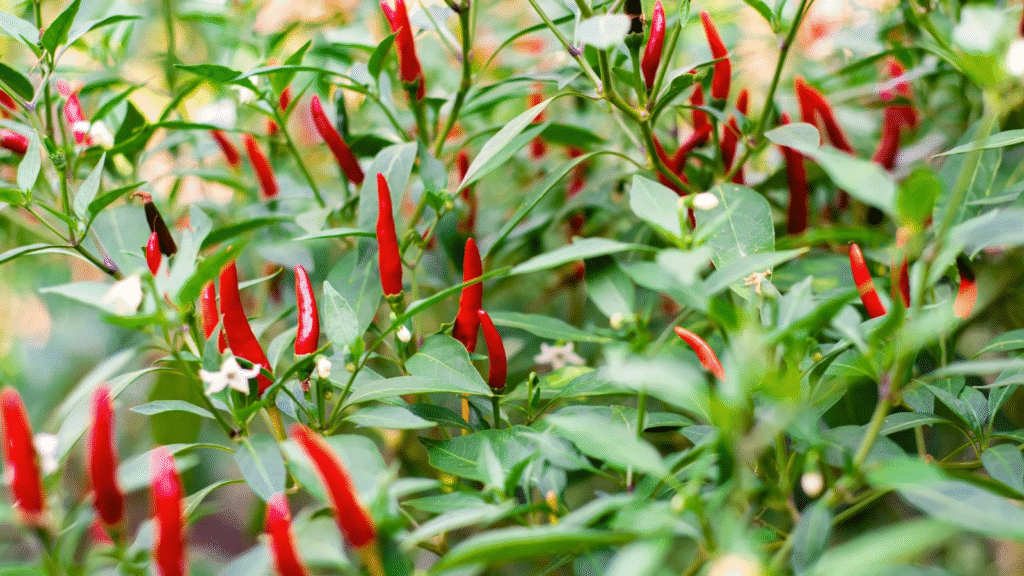
Botanical name: Capsicum annuum ‘Thai Hot’
Sun requirements: Full sun
Height: 8–10″
With 50,000–100,000 SHU, these compact peppers add traditional heat to Asian dishes. The plant produces green and red peppers simultaneously, each 1.5–3 inches long.
‘Lemon Drop’
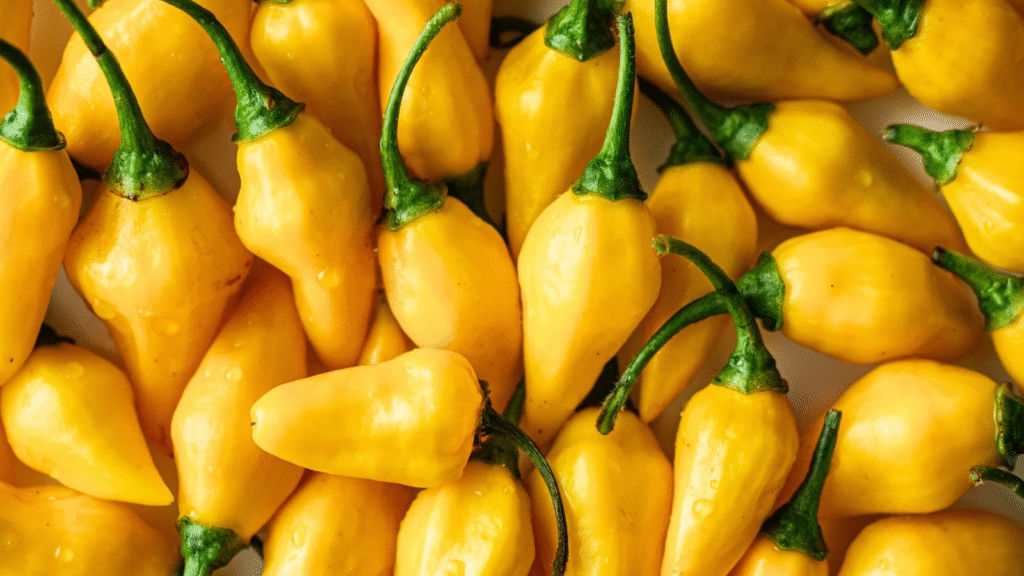
Botanical name: Capsicum baccatum ‘Lemon Drop’
Sun requirements: Full sun
Height: 20–24″
These Peruvian heirlooms (30,000–50,000 SHU) offer cayenne-level heat with a lemony zing. The 2–3 inch yellow peppers are slow to mature (around 100 days) but prolific. Compact and bushy, they’re ideal for small gardens or pots.

